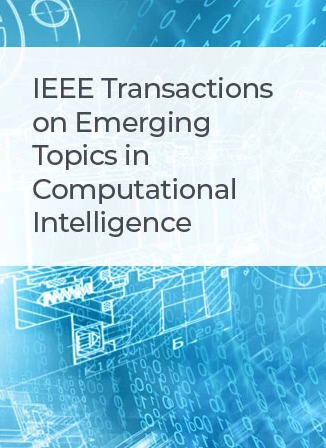Image Manipulation Localization Using Dual-Shallow Feature Pyramid Fusion and Boundary Contextual Incoherence Enhancement
IF 5.3
3区 计算机科学
Q1 COMPUTER SCIENCE, ARTIFICIAL INTELLIGENCE
IEEE Transactions on Emerging Topics in Computational Intelligence
Pub Date : 2024-11-29
DOI:10.1109/TETCI.2024.3500025
引用次数: 0
Abstract
This paper proposes a novel end-to-end network for Image Manipulation Localization (IML) comprising three modules: feature fusion, encoder, and decoder. To address the limitations of current DNN-based IML algorithms in accessing global features and segmenting tampered edges, we propose a Dual-shallow Feature Pyramid Fusion (DFPF) module. The DFPF module integrates semantic and texture features through a bidirectional pathway, forming RGB Feature Pyramids (RGBFP) and Local Textual Feature Pyramids (LTFP) using dual Hybrid ResNet50s in a ’Siamese' configuration. These feature pyramids are merged via multi-scale fusion to enhance global pyramid features for decoding. The LTFP branch includes a Pre-processing Block, Parallel Multi-Scale Convolution (PMSC), or Channel Split High-frequency Convolution (CSHC) to capture local textual features and subtle manipulation traces. The Encoder employs Transformer layers for robust global representations. At the same time, the Decoder uses Cascaded Boundary Context Inconsistent Enhancement (BCIE) Blocks to reconstruct a coarse-to-fine binary mask, enhancing texture inconsistencies at manipulated region boundaries. Additionally, we introduce an automated method for generating a large-scale forgery dataset via Photoshop Scripting, reducing labor costs. Our model effectively locates tampered regions of various shapes and sizes, improving boundary anomaly detection. Extensive experimental results demonstrate that our method significantly outperforms existing state-of-the-art models.基于双浅特征金字塔融合和边界上下文不相干增强的图像处理定位
提出了一种新的端到端图像处理定位网络,包括特征融合、编码器和解码器三个模块。为了解决当前基于dnn的IML算法在访问全局特征和分割篡改边缘方面的局限性,我们提出了一种双浅特征金字塔融合(Dual-shallow Feature Pyramid Fusion, DFPF)模块。DFPF模块通过双向路径集成语义和纹理特征,在“暹罗”配置中使用双Hybrid resnet50形成RGB特征金字塔(RGBFP)和本地文本特征金字塔(LTFP)。通过多尺度融合对这些特征金字塔进行合并,增强全局金字塔特征进行解码。LTFP分支包括预处理块、并行多尺度卷积(PMSC)或通道分割高频卷积(CSHC)来捕获本地文本特征和微妙的操作痕迹。编码器使用Transformer层来实现健壮的全局表示。同时,解码器使用级联边界上下文不一致增强(BCIE)块来重建粗到细的二值掩码,增强被操纵区域边界处的纹理不一致性。此外,我们引入了一种通过Photoshop脚本自动生成大规模伪造数据集的方法,降低了人工成本。该模型有效定位了不同形状和大小的篡改区域,提高了边界异常检测水平。大量的实验结果表明,我们的方法明显优于现有的最先进的模型。
本文章由计算机程序翻译,如有差异,请以英文原文为准。
求助全文
约1分钟内获得全文
求助全文
来源期刊

IEEE Transactions on Emerging Topics in Computational Intelligence
Mathematics-Control and Optimization
CiteScore
10.30
自引率
7.50%
发文量
147
期刊介绍:
The IEEE Transactions on Emerging Topics in Computational Intelligence (TETCI) publishes original articles on emerging aspects of computational intelligence, including theory, applications, and surveys.
TETCI is an electronics only publication. TETCI publishes six issues per year.
Authors are encouraged to submit manuscripts in any emerging topic in computational intelligence, especially nature-inspired computing topics not covered by other IEEE Computational Intelligence Society journals. A few such illustrative examples are glial cell networks, computational neuroscience, Brain Computer Interface, ambient intelligence, non-fuzzy computing with words, artificial life, cultural learning, artificial endocrine networks, social reasoning, artificial hormone networks, computational intelligence for the IoT and Smart-X technologies.
 求助内容:
求助内容: 应助结果提醒方式:
应助结果提醒方式:


